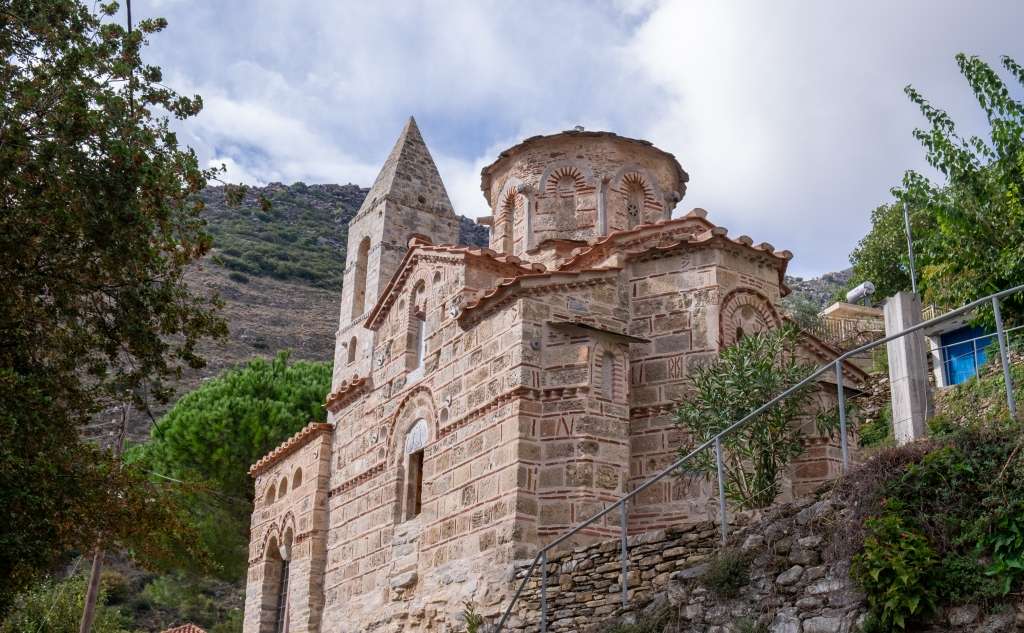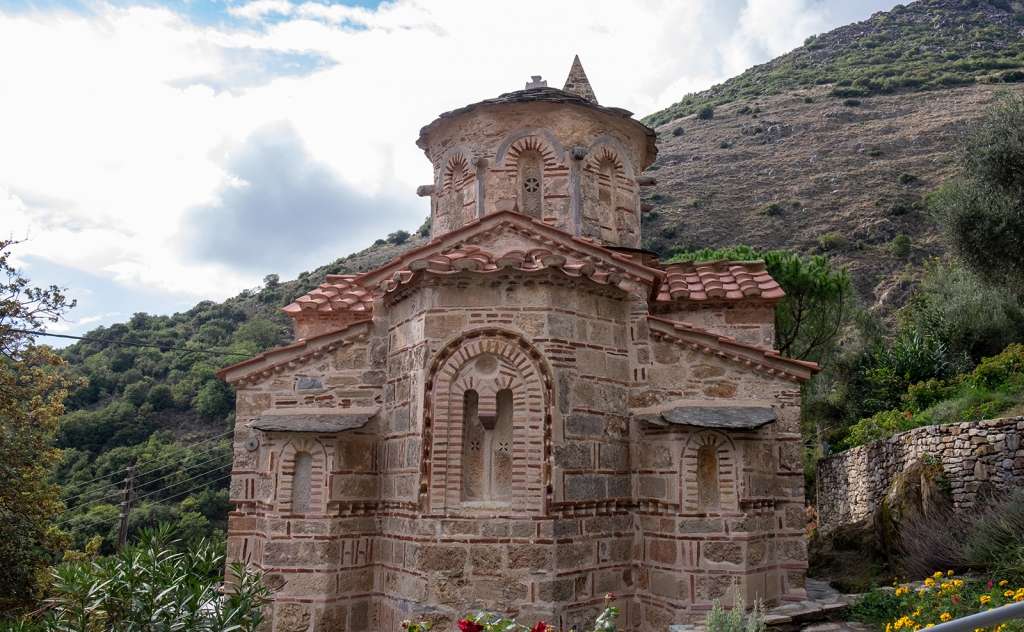Agios Petros Church
The church of Agios Petros is located in Kastania of Messinian Mani, on a small natural rock, and is the oldest of the village's ten surviving Byzantine monuments.
It is a simple four-column cruciform, inscribed late 12th-century temple with a narthex (in the form of a covered walkway). The narthex was added to the west of the church during the 13th century, while the tower-like bell tower was built in 1813. The church occupies a place among the monuments of the 12th century, compared to similar ones, exactly dated in the same period from the area of Mani. At the same time, inside it is decorated with 13th-century frescoes.
The facades of the building are structured according to the typical brick-enclosed system. Remarkable is the ornate, rectangular, embossed marble frame of the door that connects the narthex with the temple. Specifically, the door frame is crowned with a marble slab that represents a deer between two birds, torn by a vulture. The monument preserves, almost intact, an important part of the sculpture of the decoration that includes the capitals of the four columns, the doorway of the west door of the temple and the iconostasis. There are four phases in the painted decoration of the temple. The first and second layers date back to the Byzantine period, while a third Post-Byzantine layer is located in the arch. The iconographic “program” of the church of St. Peter is quite concise and includes basic scenes from the life cycle of Christ, as well as figures of saints and prophets. More specifically, the frescoes of the main church (1350-1400), follow a painting trend that attempts to convey the emotions of the figures with drama, but also standardization.
Agios Petros's church (Saint Peter) was in poor condition before the beginning of restoration works (conducted by the 26th Ephorate of Byzantine Antiquities between the years 2013-2014), facing serious structural and construction problems. The excellent quality Byzantine mural decoration of the monument had also suffered severe damage during its 800year history. In fact, during the restoration work, among other things, parts of the masonry were discovered under the tiling, which subsequent interventions had hidden. The frescoes, which were indistinguishable before the works, can now be studied in detail and become a material of great value for experts in Late Byzantine art. Finally, on November 5th, 2016, the European Cultural Heritage Award, Europa Nostra 2016, was awarded for the restoration of the church of Agios Petros Kastania.







